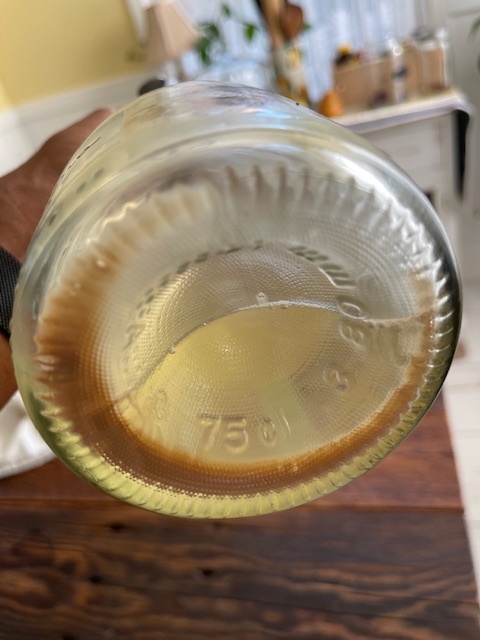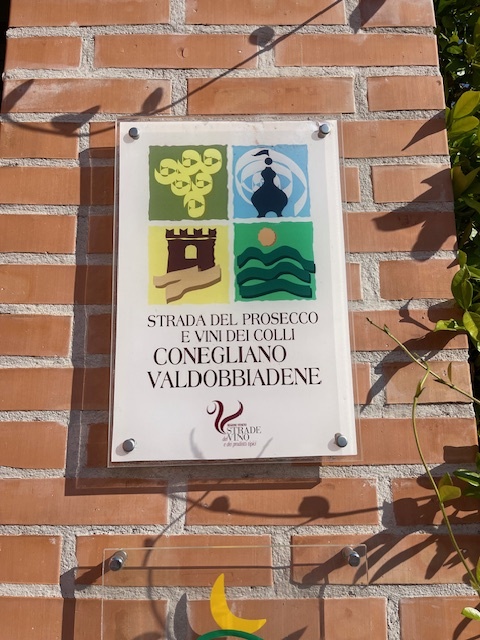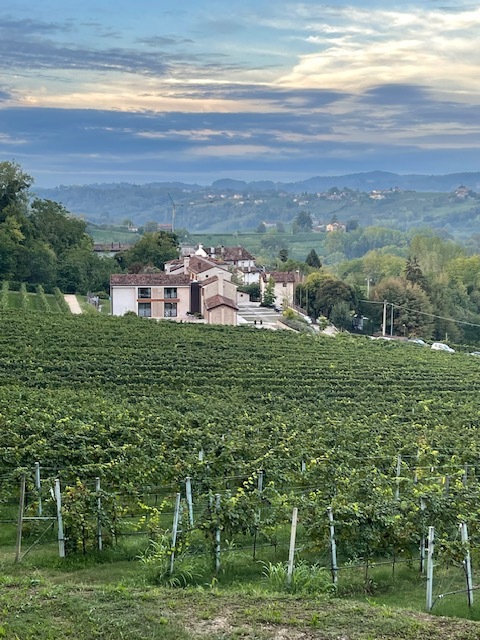During my visit to Italy for the 2022 Wine Media Conference in Lake Garda, we embarked on a pre-conference trip to the UNESCO World Heritage site of Conegliano-Valdobbiadene (“C-V”) in northeastern Italy, the heart of the Prosecco Superiore DOCG denomination. This magical and unforgettable experience was filled with highlights, including visits to several fabulous Prosecco Superiore producers, hiking through the picturesque region, and dining at a local restaurant with a predominantly Prosecco wine list. One of the most enchanting discoveries was the charm of Sui Lieviti Prosecco.
What is Sui Lieviti Prosecco?
Formally designated as Sui Lieviti DOCG Brut Nature, this traditional method was permitted by the DOCG in 2019, allowing winemakers to embrace and revive this age-old technique, which preceded the traditional method. (1)
Unlike traditional Prosecco, which undergoes secondary fermentation in stainless steel tanks, Sui Lieviti Prosecco ferments in the bottle. But, the wine is never disgorged.
This distinctive process creates a sparkling wine that still has a fine sediment of spent yeast cells in it, also known as lees. Sui lieviti means the “on the lees” in Italian. Because the wine is never disgorged, the yeasts keep working until all the sugar added to the base wine before it is bottled is consumed. The result is a Brut Nature wine with less than 3 grams per liter of residual sugar.
Clear or Cloudy?
I first tasted a Sui Lieviti wine at a the Fasol Menin winery, and later at a local restaurant during lunch. On both occasions, I was asked if I preferred my Prosecco “clear” or “cloudy.” Choosing clear meant the bottle would be opened and the wine poured gently, resulting in a relatively normal-looking glass of Prosecco with crisp, ripe fresh fruit and floral notes. However, opting for cloudy meant the server would gently invert the bottle a few times to mix the lees into suspension before opening it. This method transforms the wine, giving it a cloudy appearance and a richer texture. The extended contact with lees offers more complexity with additional aromas and flavors, with a pronounced yeasty note. Essentially, It’s two wines in one!
Try it both ways and see which you prefer. Personally, I found the cloudy version to be more intriguing and enjoyable.
Note: If you’re familiar with Col Fondo Prosecco, you might be wondering about the difference between Col Fondo and Sui Lieviti. Sui Lieviti wines are bottled at spumante-level pressure, while Col Fondo wines are bottled at lower “frizzante” pressure. Additionally, Sui Lieviti must be brut nature, ensuring minimal residual sugar, and they are classified under the more prestigious Prosecco Superiore DOCG.
2020 Bianca Vigna Sui Lieviti DOCG Brut Nature
Inspired by my visit to region, later that same year, I entered a C-V food pairing contest. This wine was one of the prizes I received for winning the #WhatsYourProseccoSuperioreStyle Recipe Contest in the Brut category.

Beautiful packaging includes protective UV orange film to minimize light strike 
Unwrapped 2020 Bianca Vigna Sui Lieviti DOGC Brut Nature

Fine lees at the bottom of the bottle 
On the left the “cloudy” pour, and on the right the “clear” pour 
From above: Cloudy and Clear
Tasting Note:
Clear or cloudy pale gold green color with ripe melon, green apple, kumquat zest aromas. When poured cloudy fresh bread dough and dried herb aromas are present. On the palate, it’s medium-bodied and fresh with melon, green apple, kumquat zest, lemon curd flavors accented with a subtle wet stone minerality, and a very satisfying finish. ABV – 11.5%| SRP – $28| 91pts
This wine is currently imported exclusively under the brand name Giavi by The Wine House. Purchase here
About Bianca Vigna
In 2004, siblings Elena and Enrico Moschetta turned their dream into reality by producing sparkling Conegliano Valdobbiadene wines from their family’s historic vineyards, owned by their grandfather Genesio since the early 1900s. With Enrico’s twenty years of winemaking expertise and Elena’s administrative skills, along with distribution support from her husband Luca Cuzziol, they launched BiancaVigna.
Today, BiancaVigna spans around 30 hectares and produces DOCG and DOC sparkling wines enjoyed worldwide, including Europe, the USA, the UK, Japan, and Australia. In Italy, their wines are featured in starred restaurants, international hotels, wine shops, and select bars.
From the beginning, BiancaVigna has prioritized sustainability. In 2015, they inaugurated their new winery on the picturesque hills of Ogliano near Conegliano, which received the ‘Casaclima Wine’ pre-certification for climate neutrality and sustainable practices, including the use of
recycled materials and renewable energy. Their vineyards are managed with integrated pest management (SQNPI), and one vineyard is organically farmed, producing the Prosecco DOCG Organic, a testament to their commitment to sustainability.
I encourage you to seek out this captivating Sui Lieviti wine or another like it. These wines are perfect for those who savor tradition and authenticity in every sip of Prosecco Superiore Sui Lieviti DOCG Brut Nature!
Footnote:
(1) The method used today was invented by Professor Federico Martinotti in 1895, with the autoclave (pressurized tanks) later designed, built, and patented by Frenchman Eugène Charmat in 1910. However, before this innovation, Prosecco was traditionally made through secondary fermentation in the bottle. According to Wine Folly, references to Prosecco with “second fermentation in the bottle” date back to before the 9th century.


So interesting, particularly to try these side by side! We’ve often found more sweeter proseccos than not but this at less than 3g/L sounds right up our alley…
No side by side needed for this one, if you do as I did – gently pour a glass, then swirl the bottle to throw the lees into suspension and pour a second glass. It’s fun to see the difference between two glasses poured from the same bottle! Agreed on seeking out the drier style Prosecco! Cin cin!
Nice article Martin; it led me on a brush-up of Italian sparkling wines 😉 I applaud BiancaVigna’s prioritizing sustainability. These days, I’m trying to support only producers like them. So when I’m in northern Italy this autumn, I will look for this wine!